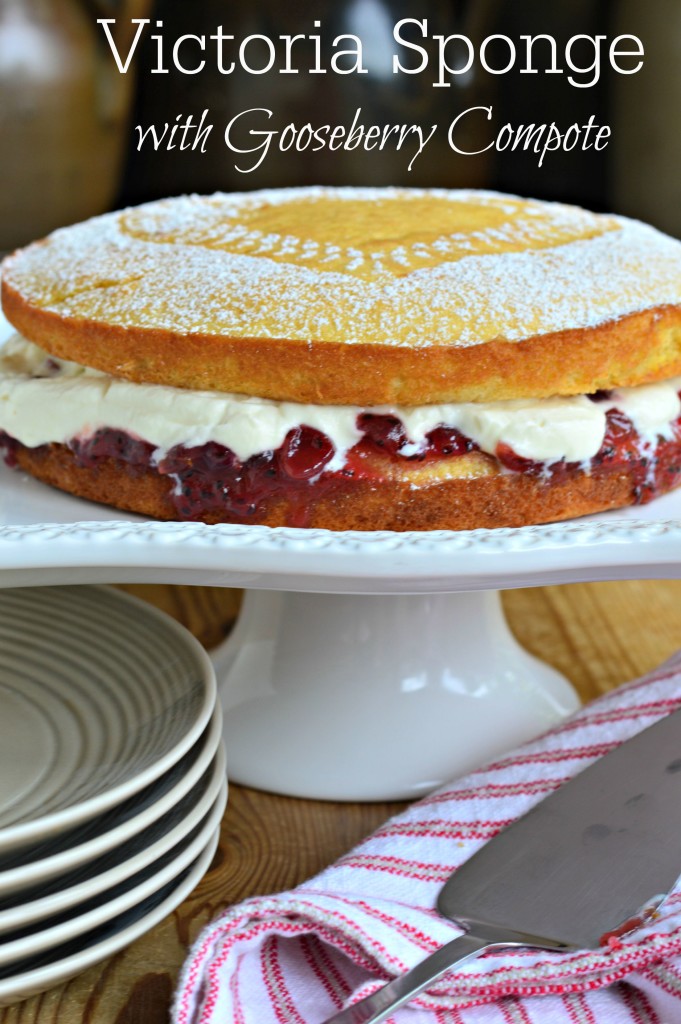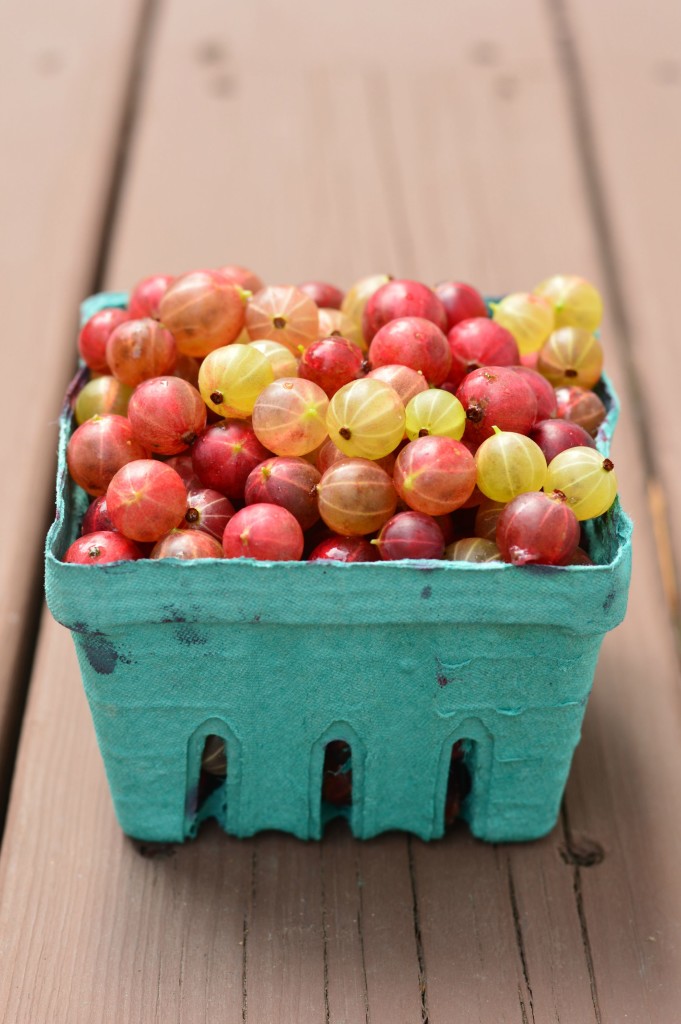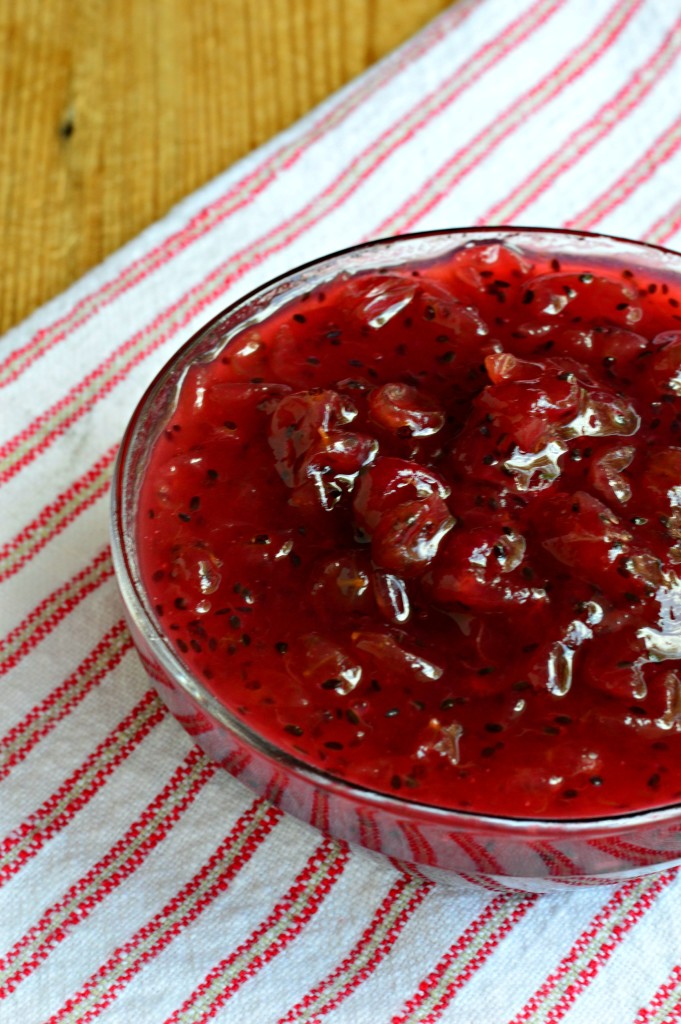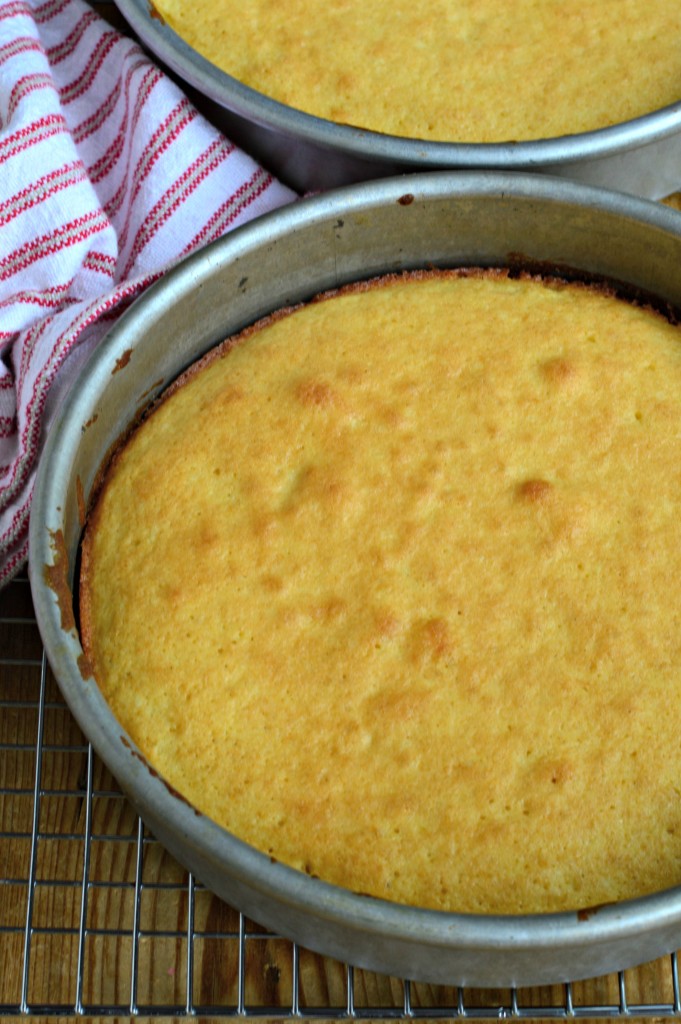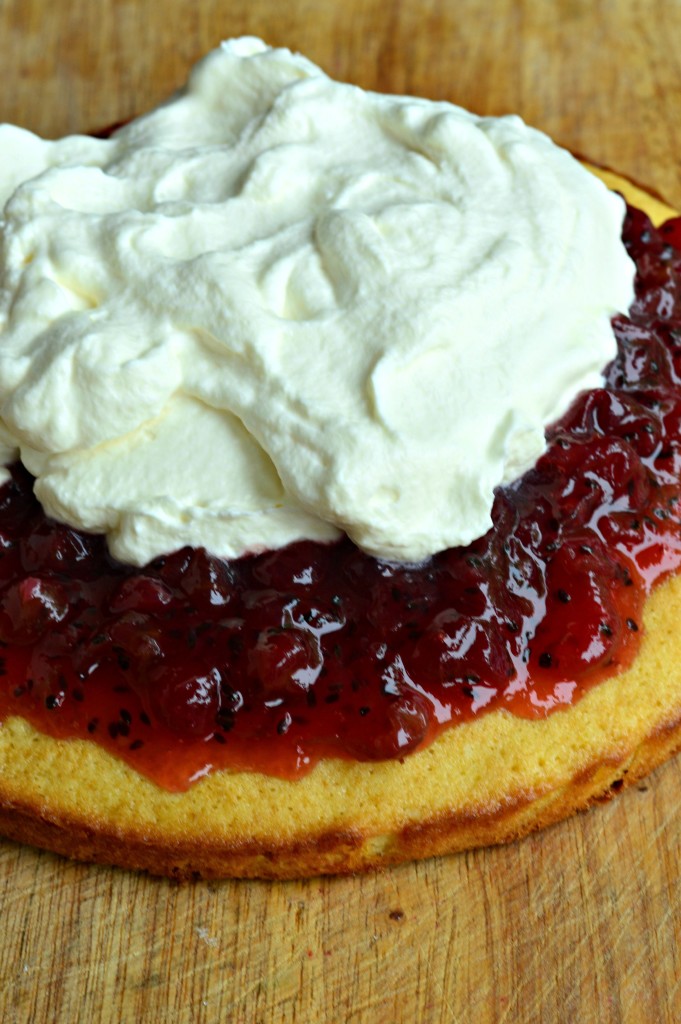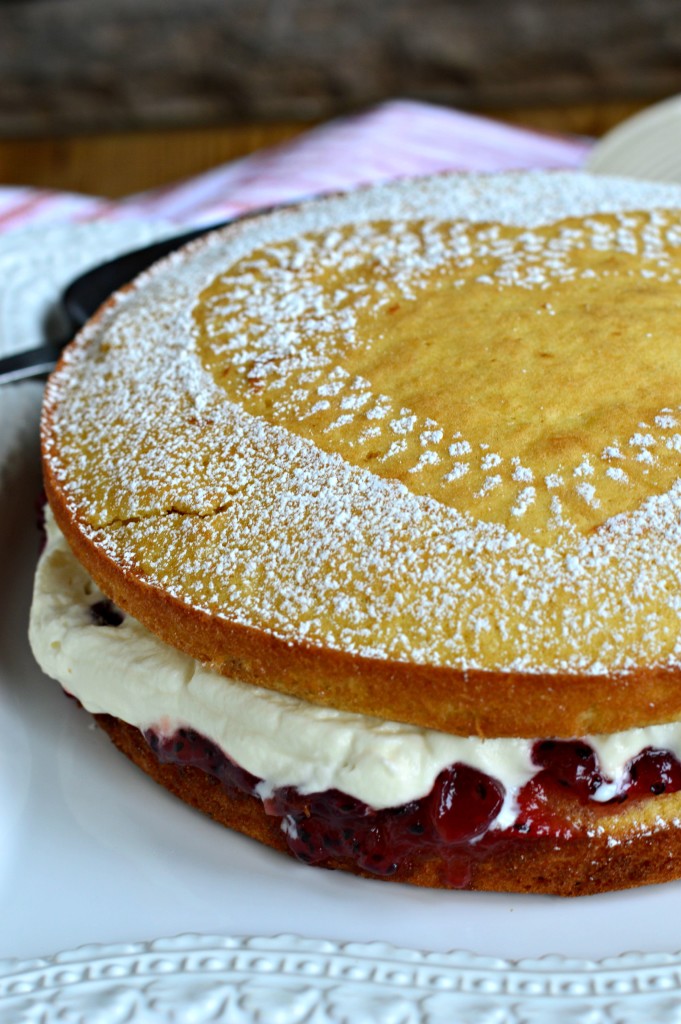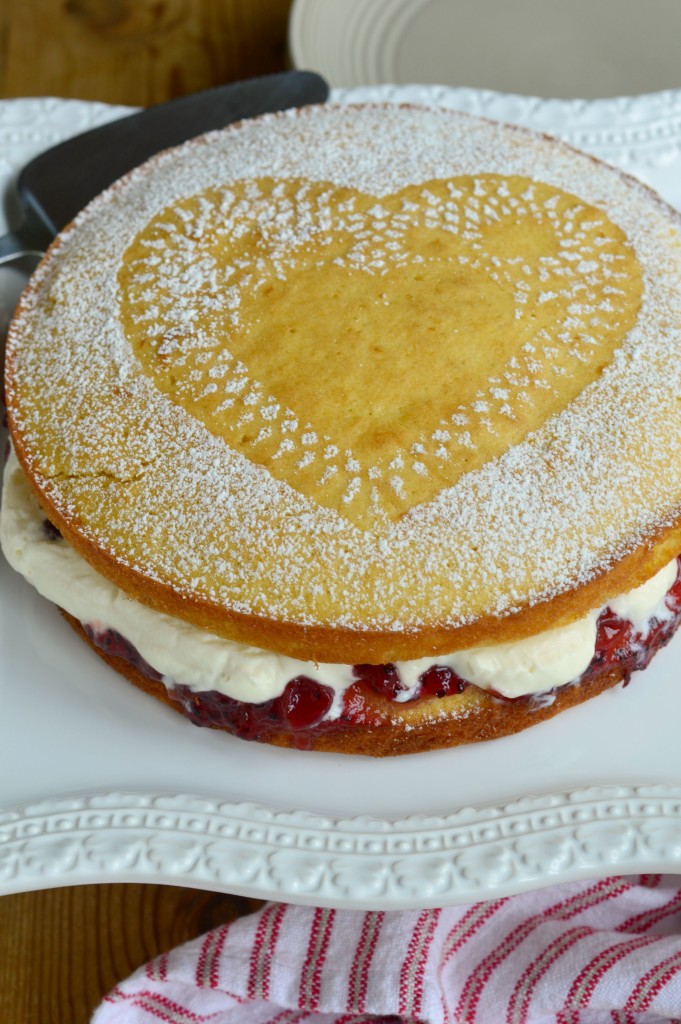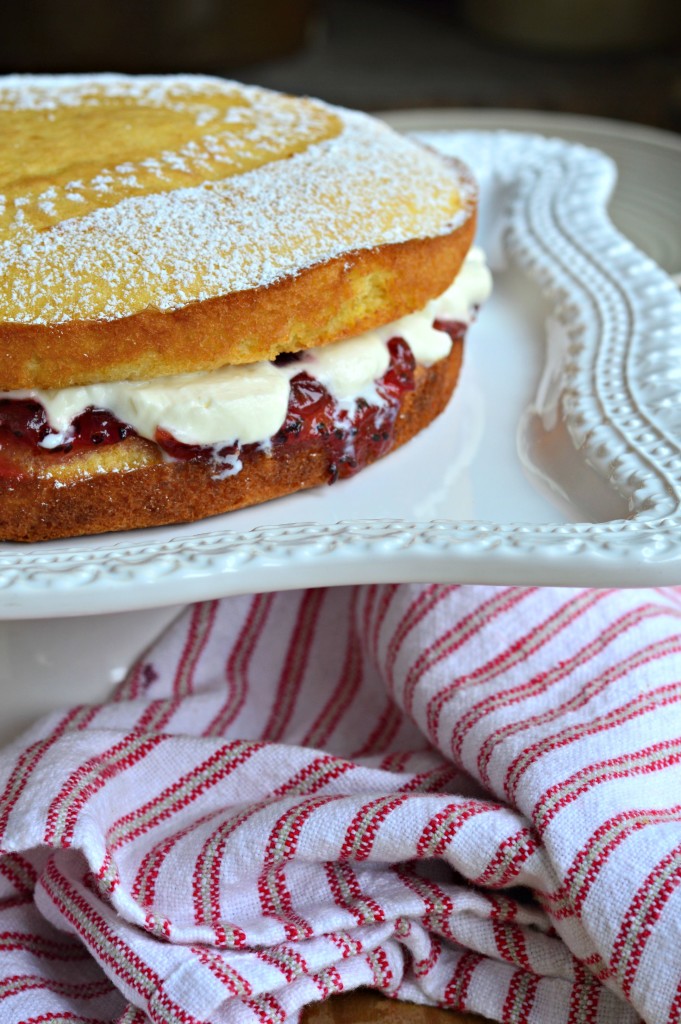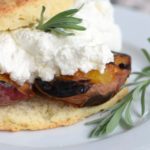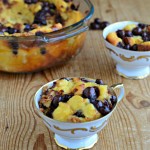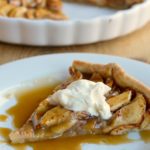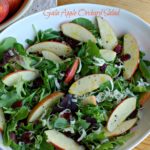My corner of the Chicago area is small, but surprisingly international. So it was the other day that I found myself in a conversation with four other people at a cocktail party none of whom had been born in the United States. There were two Brits, a Canadian, a Swede and boring old me.
The conversation turned to food. Okay, I steered the conversation toward food by mentioning that I had bought gooseberries at the farmers market that morning. I knew that the Europeans in the group were more likely to be familiar with gooseberries than most Americans and might even appreciate my find.
Both my friend Jo, one of the Brits, and the Swede immediately began discussing how the small, red gooseberries found at our farmers’ market were different from the large, green gooseberries of their childhoods. Who knew? I had started a gooseberry controversy.
Whatever kind of gooseberries you see at your farmers’ market, you should give this under-appreciated fruit a try. Odd-looking and tart, gooseberries turn palatable and beautifully pink when cooked with a generous application of sweetener.
If you are looking for gooseberry recipes, as I was, you will do well to look across the pond. The fruit had long been prized in the United Kingdom — where it is traditionally combined with elderflowers — because in the days before fruits were imported from elsewhere, gooseberries were one of the first fruits to ripen in spring. Nowadays, British chefs and home cooks just enjoy gooseberries for their complex, slightly mineral flavor and their nostalgia value.
My first step in taming my farmers market gooseberries’s pucker was to cook them down with some sugar and a splash of water into a compote. Gooseberry compote is a versatile ingredient that can be used in drinks, desserts and even sauces. This recipe will leave you with more compote than you need for the cake filling, so feel free to experiment with the remainder.
Because they are not too sweet, gooseberries also work well in savory dishes and in Britain, gooseberry sauce is sometimes served with fatty meat or fish, like mackerel. But the most classic preparation is a Gooseberry Fool, a dessert of fruit puree, whipped cream and custard.
I wanted to make a classic British dessert with my gooseberry compote — how could I resist? But instead of a gooseberry fool, I decided to make the ultimate teatime cake, a Victoria sponge, and fill it with my gooseberry compote.
A Victoria sponge, so named because it was Queen Victoria’s favorite dessert, is a fairly recent invention…if you consider the 1840’s recent. It took the development of baking powder to allow home cooks to create such rich, buttery confections.
Baking powder is so critical to the texture of the sponge cake that many recipes call for self-rising flour, a flour, salt , baking powder mix. I think that few of us on this side of the Pond even have self-rising flour in their pantries these days. (I have all-purpose flour, cake flour, bread flour, whole wheat flour, Italian 00 flour, and semolina flour but not self-rising flour myself.) So I substituted a mix of cake flour, all-purpose flour and baking powder. So should you.
The end result was so gorgeous and tasty that I felt like Mrs. Patmore from “Downton Abbey.” Or at least Daisy. If only I had some lords and ladies to present with my Victoria sponge! Instead I served it at festive brunch for a group of friends.
Every adult and my friend’s adorable toddler polished off their slices with gusto. One of my children picked at her slice and the other took one look at the thing and walked away. Pearls before swine, I guess. But I am sure that your children will appreciate your efforts if you make them this fabulous cake, to say nothing of any British ex-pats in your life who may weep upon being presented with this nostalgic dessert from their childhood.
- 1½ pints gooseberries, topped and tailed (stems and blossoms removed - I find that the easiest way to do this is with kitchen scissors)
- 1½ cups sugar
- ½ cup water
- ¾ cup all purpose flour
- ¾ cup cake flour
- 1½ tsp baking powder
- ½ tsp salt
- 8 oz unsalted butter at room temperature
- 1 heaping cup sugar
- 4 large eggs at room temperature
- 1 TB vanilla extract
- Zest from one lemon
- ¾ cup heavy cream
- 1 tsp sugar
- 1 tsp vanilla extract
- To make the gooseberry compote, combine the gooseberries, sugar and water in a large saucepan.
- Bring mixture to a boil, turn down heat and simmer until gooseberries have burst. Mash berries with a fork or potato masher and simmer a few more minutes until thickened.
- Allow to cool and set compote aside. (May be done up to three days in advance.)
- To make the sponge cake, preheat oven to 375 and butter and flour two 8 or 9 inch round baking pans.
- In a small bowl, whisk together flours, baking powder and salt. Set aside.
- Cream butter and sugar in the bowl of a standing mixer until light and fluffy, about three minutes
- Add eggs one at a time, scraping down the sides of the bowl between each addition.
- Add the vanilla extract.
- Gradually add the flour mixture, scraping down the sides of the bowl as necessary, just until combined. Do not overmix!
- Fold in lemon zest.
- Divide batter evenly between the cake pans. (I weigh mine to make sure that I have divided the batter evenly but it is possible that I am a bit obsessive.) Smooth tops.
- Bake 20 minutes or until a skewer inserted in the middle comes out clean and cake has begun to pull away from the sides of the pan.
- Allow to cool on a wire rack.
- Pour heavy cream into bowl of a standing mixer and beat with the whisk attachment on high speed. Gradually add the sugar and vanilla extract.
- Beat until soft peaks form. Cover and keep refrigerated until needed.
- Carefully remove cakes from cake pans.
- Examine the bottom of each cake and select the cake with the firmer bottom to be the bottom layer of the sponge.
- Place 1⅓ cups gooseberry compote on the top of bottom layer. Top with whipped cream and spread it over the compote but do not spread it all the way to the edge.
- Top with the second cake, flat side down and press down very lightly.
- Dust with powdered sugar for decoration.
